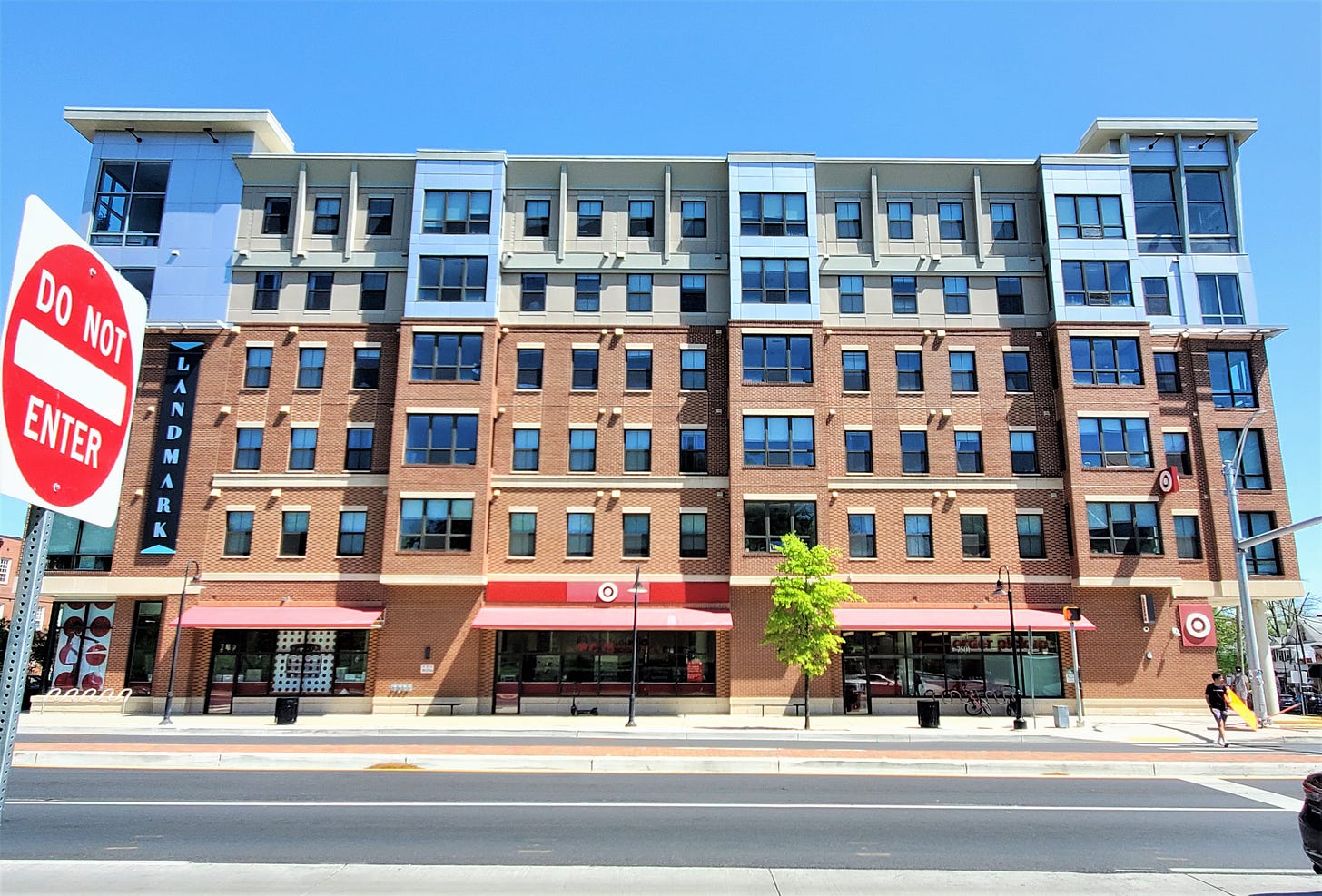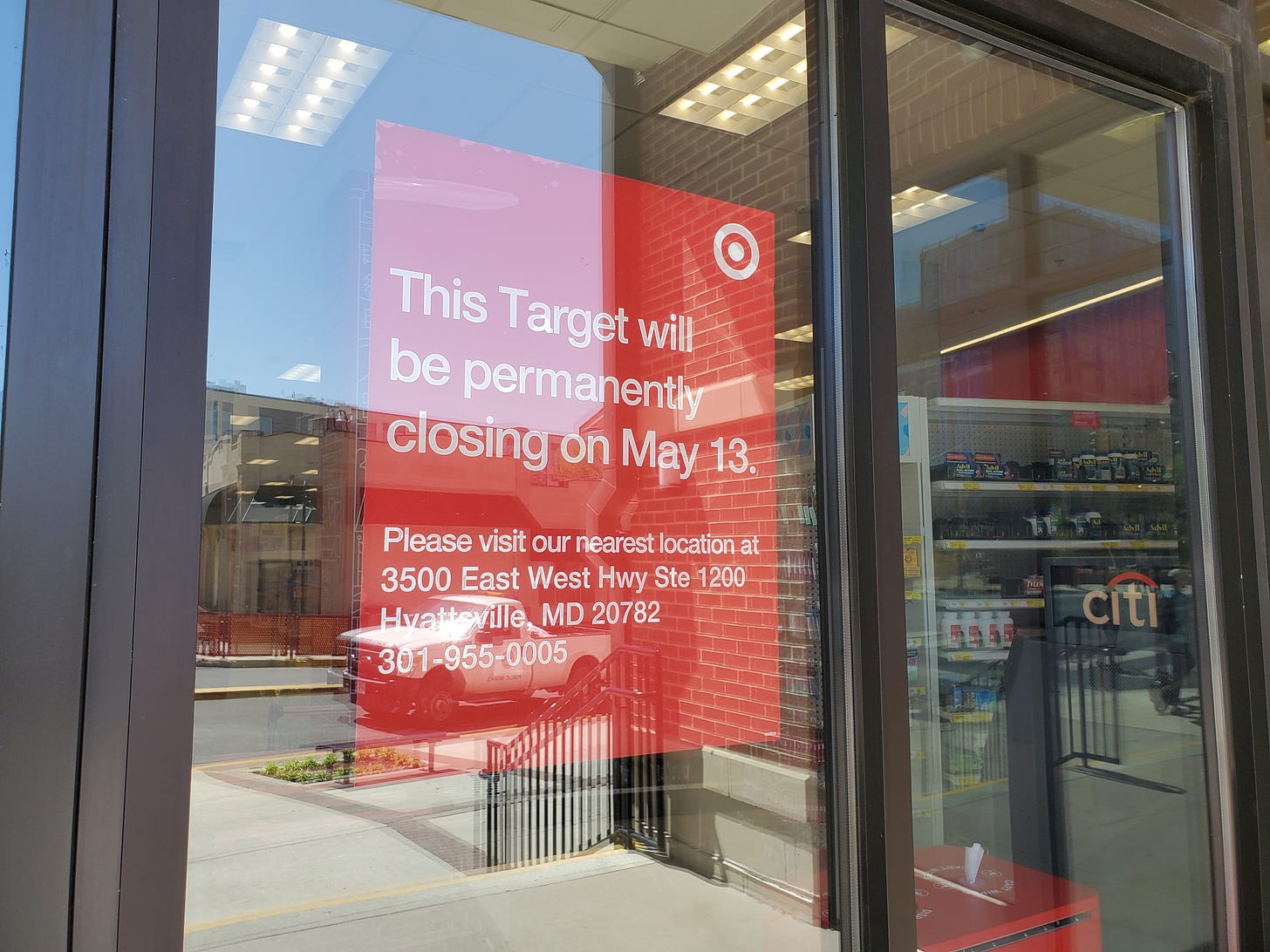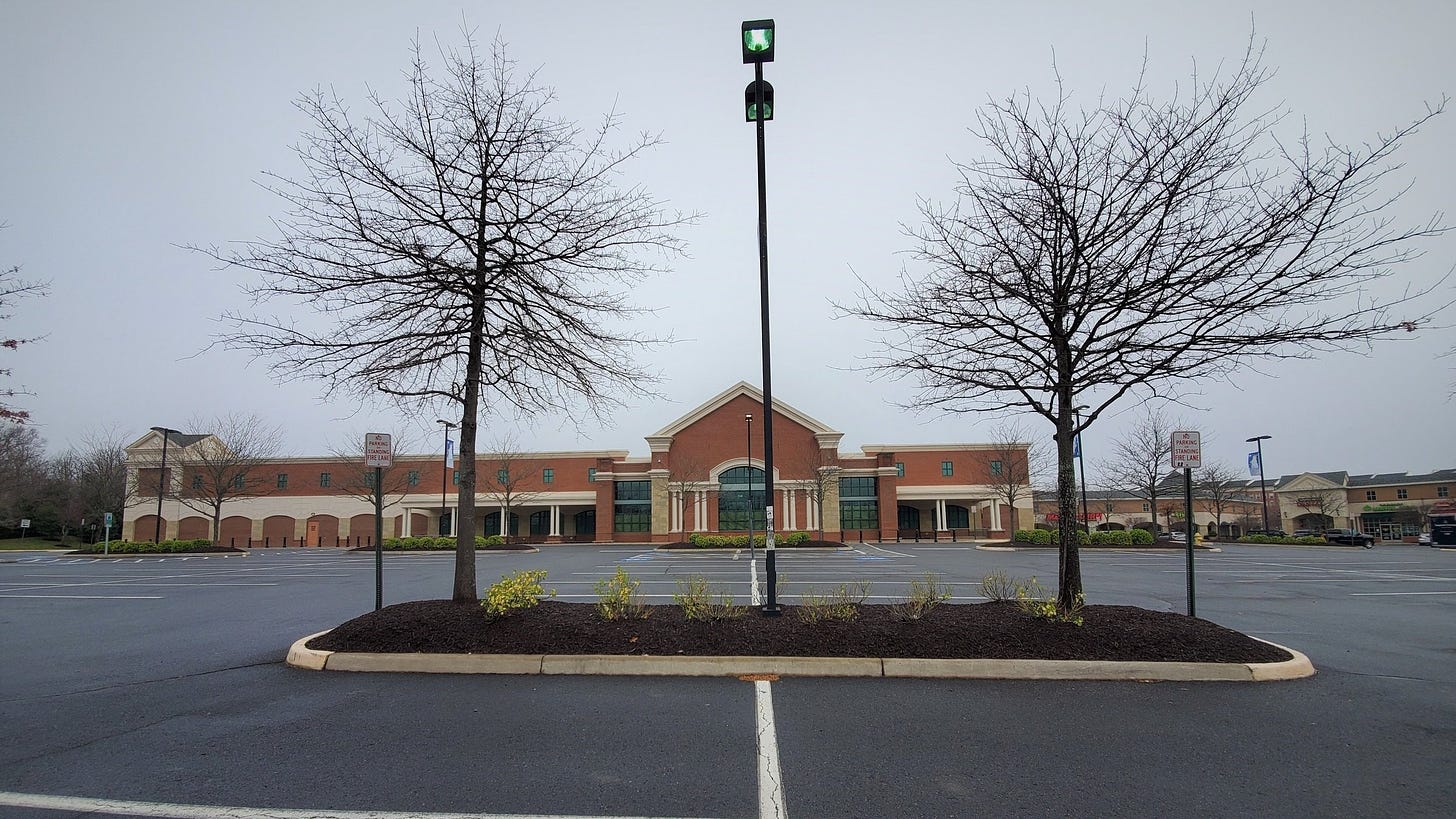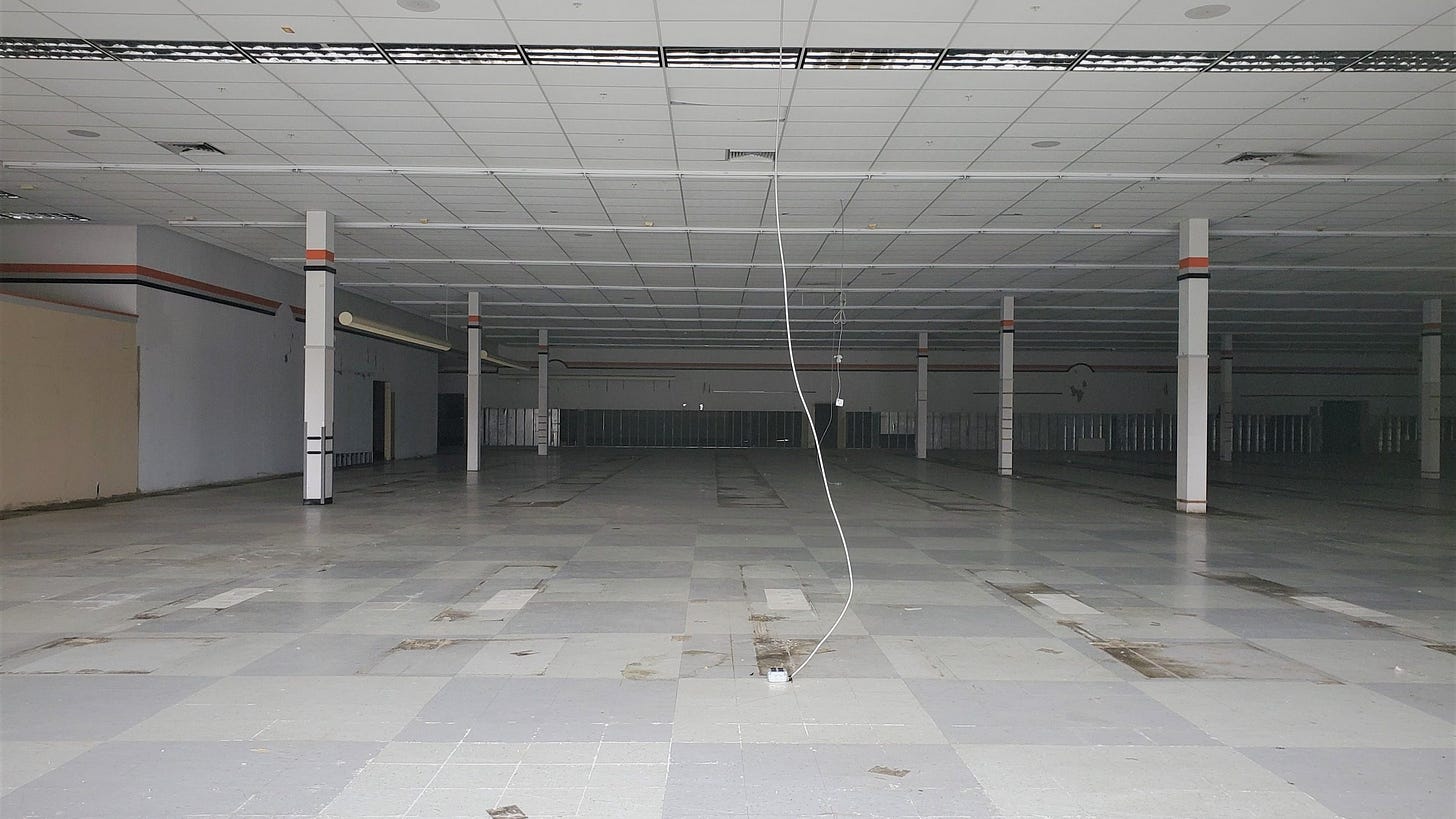Back in March, Target announced the impending closure of two D.C.-area stores. There are a lot of Targets scattered around the D.C. suburbs in Maryland and Virginia. A couple of them are older, so when I saw the headline I thought Target might be paring down its oldest strip-retail locations—to focus, perhaps, on expanding its emerging small-format stores in more urban locations.
But I read the article, and that is not the case. In fact, these two Targets are among the metro area’s newest locations. One opened in 2015; the other opened in late 2016 or early 2017.
And would you look at them. First, in College Park, Maryland:
And second, in Falls Church, Virginia:
Not only are they newer stores; they anchor large new apartment buildings, turning them into mixed-use developments. The one in College Park is right in the middle of the main drag, a boon for carless students in particular. It was met with excitement, given the city’s relative lack of walkable everyday shopping, and seen as part of a larger urban transformation of the area. “More high-end student apartments are going up on Route 1, and last week Target announced plans to open one of the nation’s first Target Express stores inside one of them,” wrote Maryland urbanist Dan Reed in early 2015.
The Washington Post article Reed cites identifies the College Park mini-Target as only 14,617 square feet, roughly the size of a CVS or Walgreens. These stores include a fresh and frozen grocery section and a smattering of offerings from most of the expected departments, albeit with greatly reduced selection. The Post also noted that at the time, there were only three other small-format Targets in the nation.
Target itself, in 2019, boasted that it had opened nearly 100 of these mini-Targets, heavily skewed toward college towns, and that it was still opening them across the country. As far a I can tell, that hasn’t changed overall; plenty of these stores do survive.
Here’s what they look like inside:
But, sadly:
The fact is, most non-students, and many students with a car, probably were hopping in the car and driving to the Hyattsville, or slightly further Greenbelt, locations all along, neither of which is terribly convenient to visit without a car. And while the small-format Targets—sometimes affectionately called “baby Targets”—are useful, they’re not the true one-stop-shop emporiums that traditional Target stores are.
The immediate reason for these closures is probably poor store performance. Despite all of the people living nearby, it’s just not enough. But this particular challenge underscores the broader issue with mixed use as a developer-driven concept, where you try to reverse engineer something like an urban neighborhood by getting one or a few chain stores on board.
The fundamental problem is that the economics of a Target, or a modern supermarket, are very different from the economics of a genuine neighborhood store. They just aren’t scaled for this kind of local neighborhood setting. Everybody in a new apartment building would probably appreciate a discount department store or a supermarket on the ground floor, or right next door.
But the business model of discount department stores and supermarkets precludes that. In the old days, when every small town had its own economic ecosystem, all those towns had their own hardware stores, butchers, bakeries, grocery stores, bookstores, etc. Those businesses were scaled to serve perhaps no more than a few hundred people, and rarely more than a few thousand. So were their supply chains.
But the “trade areas” of modern stores are larger, and simply shrinking the physical footprint doesn’t quite turn a Target into a neighborhood general store.
Take a look at these photos I took in Gainesville, Virginia, an exurban Northern Virginia community:
These are two different vacant supermarkets, both adjacent to relatively recent dense housing, and both intended to create mixed-use developments. They’re about two miles apart. A Wegmans opened up nearby, and drove them out of business. Now two “mixed-use developments” have no supermarket, and like everybody else, their residents have to drive to Wegmans whether they want to or not.
You cannot—or you can, only with difficulty and luck—build traditional urbanism out of suburban, car-oriented building blocks. Target, perhaps, is learning this. Those erstwhile supermarkets learned it.
I hope that this isn’t the beginning of a collapse or oversaturation of the mixed-use development model, because it’s better than the alternative. But I do hope it gets us thinking more deeply and seriously about how to spur genuine mixed-use development, more than attempting to reverse-engineer mixed-use developments.
Related Reading:
Thank you for reading! Please consider upgrading to a paid subscription to help support this newsletter. You’ll get a weekly subscribers-only post, plus full access to the archive: over 600 posts and growing. And you’ll help ensure more material like this!













There's one of these mini Targets in my Chicago neighborhood, anchoring the ground floor of a newish mixed-use development. It always seems fairly busy despite the existence of a traditional big box Target about a mile away. It probably helps that it's on a busy corner that sees a lot of foot traffic with multiple nearby bars and restaurants (including some that are in the same building as the Target). I suspect you need some level of foot traffic beyond just the people who live in the building above the store to make these type of businesses viable.
Personally, I shop at both Targets. I drive to the bigger store if I want something that the smaller store doesn't carry or if I plan to buy more than will comfortably fit in my backpack. Otherwise, I prefer the convenience of walking to the smaller store and not having to deal with traffic or parking.
Sadly, I think in these areas that are urbanizing - but not quite there yet - the allure of driving to the more convenient/cheaper store that benefits from the mega-economies of scale is just too strong. It will take a lot more urbanizing before that equation shifts. My favorite example is Trader Joes in Brookline MA near where my daughter lived. It's an extremely small format, even for a TJs, but it is jammed every day/hour they are open because so many people live close without cars. For these places you mentioned in your article, in the short term the property owner will probably take a hair cut (explicitly or implicitly) to rent them to smaller/down scale retail - extend and pretend as it's called - or leave them empty and hope. Either that or some supply chain economic disruption will make smaller scale possible, but that is a scenario that has a plethora of ancillary problems that I think no one wants to see (but according to some like James Howard Kunstler is inevitable).